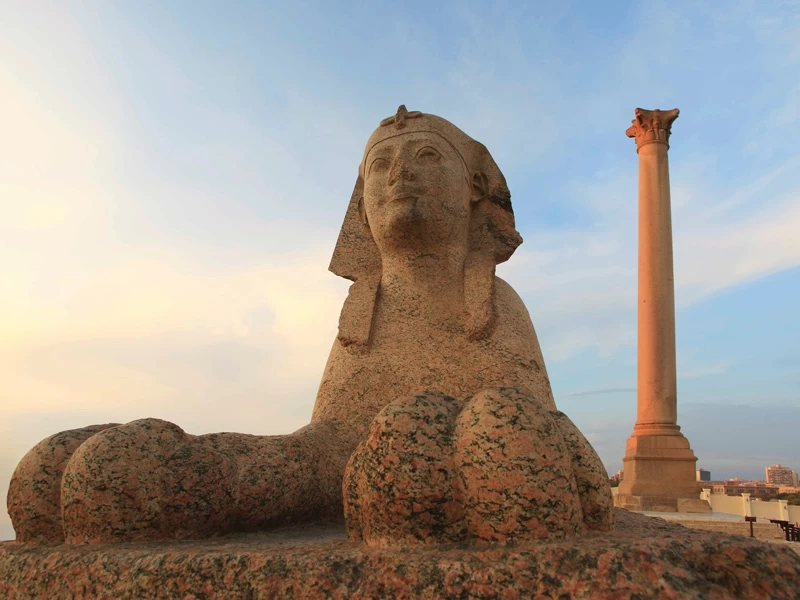
When Was The Red Pyramid Built?
Standing in the heart of Egypt’s Dahshur Necropolis, the Red Pyramid is a remarkable structure. If you’ve ever wondered, 'When was the Red Pyramid built?' its construction dates back to the reign of Pharaoh Sneferu. This pyramid, which was built during the reign of Pharaoh Sneferu, marks the now-actual turning point develop pyramid construction. Known for being the first “true” smooth-sided pyramid, this pyramid was the forerunner to the grand pyramids of Giza, which proved an architectural design refined to inspire future generations.
When Was the Red Pyramid Built?

For those curious about when the Red Pyramid was built, it dates to Pharaoh Sneferu’s reign between 2613 and 2589 BCE. The construction likely started in the 30th year of his reign, with completion around 2575-2563 BCE. Scholars think that construction began in the 30th year of his reign, which would put completing the pyramid around 2575-2563 BCE. Studies of quarry marks and other markers showing construction suggest the project took 10 to 17 years to complete. It is the third-largest pyramid in Egypt, being larger than the Pyramid of Menkaure but much smaller than the two pyramids at Giza, built by Khufu and Khafre.
Why Was the Red Pyramid Built?
Understanding why the Red Pyramid was built adds to its historical significance. Knowing when the Red Pyramid was built—around 2575-2563 BCE—reveals how Pharaoh Sneferu perfected his design after earlier attempts. Similar to many other Egyptian kings, Sneferu believed in monumental architecture to seal his position in the realm of eternity. The Dahshur Necropolis, an extended facility for the burials of the pharaohs and their elite class, contains it. Sneferu attempted to create a stable, smooth-sided pyramid with this pyramid, after his earlier attempts at pyramid building, such as the Bent Pyramid, failed to replicate his desired shape.
Distinctive Features of the Red Pyramid

The unique appearance of the Red Pyramid stems from its reddish limestone. This detail, tied to when the Red Pyramid was built during Sneferu’s reign, sets it apart from other pyramids. The pyramid’s name came from its red limestone, but the design didn’t include it because they covered it in the pure white limestone of Tura, south of present-day Cairo. Over time, people removed the casing, leaving the reddish stone that we see today.
The Red Pyramid stands at an outstanding 105 meters (344 feet) high, with a base 220 meters (722 feet) on each side. The sides of the Red Pyramid slope at a 43-degree angle. This safer incline distinguishes it from the Bent Pyramid, with its sharp, unstable angle that collapses part of it.
The Evolution of Pyramid Design: From Step to Smooth
The Red Pyramid testifies to the progress achieved in constructing pyramids. Before construing the Red Pyramid, Sneferu’s architects struggled to create a stable structure. At Medium, they aimed to construct the Pyramid. The Red Pyramid’s symmetrical sides showed their mastery of engineering. This success paved the way for future pyramids, including the Great Pyramid of Giza.
Exploring the Interior of the Red Pyramid

Inside the Red Pyramid, several chambers and corridors provide evidence of its complexity. The main entrance is on the northern side, leading via a narrow passage down into the very core of the pyramid. As one proceeds further inside the pyramid, several chambers with roofs of corbelled construction come across, resembling something like an inverted stairway. These architectural features were part of the internal stability provided to the pyramid.
Experts believe the main chamber, near the center of the pyramid, once housed the remains of Pharaoh Sneferu. Although looters have ransacked the chamber throughout the centuries, its size and the precision of its construction reflect prizing the pharaoh’s last resting place. The chamber is 23 feet long and 50 feet high, designed to accommodate the enormous stone sarcophagus of the king.
The Red Pyramid’s Role in Ancient Egyptian Beliefs
Like all Egyptian pyramids, the Red Pyramid was more than a simple tomb passageway to the next world. According to the ancients, the soul of the pharaoh would rise upwards to the heavens, where he would join the gods in eternal life. It was, therefore, built to be a means of such a journey, with features like ventilation shafts to protect and see the soul through to the afterlife.
Facts About the Red Pyramid

- Place: The Red Pyramid is located in the Dahshur Necropolis about 25 km south of modern-day Cairo. It is located a kilometer north of the Bent Pyramid.
- Construction Date: They constructed this pyramid from 2575 to 2563 BCE.
- Size: This pyramid stands at a height of 105 meters with a base length of 220 meters on each side, hence making the pyramid the third biggest pyramid in Egypt.
- Material: cased in Tura limestone, people removed most of it during later periods.
- Chambers: The pyramid contains three main chambers, with the believed-to-have-been-looted burial chamber dating back to antiquity.
- Significance: People consider the Red Pyramid to be the first true smooth-sided pyramid, marking a crucial development in pyramid engineering.
How to Visit the Red Pyramid
Visitors can explore the Red Pyramid from 8:00 AM to 5:00 PM each day. This pyramid offers a glimpse into the ancient Egyptian world. Accessing this pyramid is not complex since it is well-sign-posted and accessible from Cairo. Guided tours through the pyramid provide information on the construction, historical context, and cultural significance of the pyramid.
When Were Ancient Pyramids Built?
Conclusion: The Enduring Legacy of the Red Pyramid
The Red Pyramid, built during Pharaoh Sneferu’s reign, is a testament to the ingenuity and foresight of ancient Egyptian architects. When was the Red Pyramid built? Its construction, between 2575 and 2563 BCE, marked a turning point in pyramid design. It’s one of the oldest and most important pyramids in Egypt, providing a unique glimpse into the early development of pyramid construction. This development eventually led to the colossal pyramids at Giza. Visitors to this remarkable site can reflect on the extraordinary accomplishments of a civilization still able to fascinate the entire world because of its mysteries and its beautiful expanse.
The Red Pyramid is one of the most striking monuments in Egypt, and its role develop pyramid design cannot be exaggerated. Whether you’re exploring its chambers or standing in awe of its massive size, the Red Pyramid is an essential part of any Egyptian adventure.
.webp)













-webp.webp)





-webp.webp)





-webp.webp)
-webp.webp)
-webp.webp)






-webp.webp)
-webp.webp)

-webp.webp)
-webp.webp)
-webp.webp)
-webp.webp)
-webp.webp)
-webp.webp)



-webp.webp)






-webp.webp)
-webp.webp)










.png)

